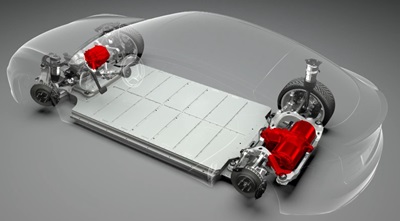The excellent post ‘Behavioral economics has a plan to fight poverty—and it’s all about redesigning the “cockpit”‘, presents an interesting analysis of poverty. It brings on the surface the issue of cognitive overload.
 The theme of the post is that one reason poor people have difficulties escaping from the poverty trap is that because of their limited means, they need to spend a large amount of cognitive capacity (which is limited for all individuals) solving basic issues such as food and shelter. As a result, they can’t quite spend enough cognitive capability on higher purposes such as, for example, developing a sustainable way to escape poverty.
The theme of the post is that one reason poor people have difficulties escaping from the poverty trap is that because of their limited means, they need to spend a large amount of cognitive capacity (which is limited for all individuals) solving basic issues such as food and shelter. As a result, they can’t quite spend enough cognitive capability on higher purposes such as, for example, developing a sustainable way to escape poverty.
And it is quite true that being well-off basically allows to avoid thinking about certain constraints such as budget when shopping for groceries and where one will sleep tonight, freeing the mind towards higher fields of thinking.
It would also mean that a way to help people escape poverty is to provide support on a temporary basis (a few weeks/months) to free some cognitive capacity to develop a sustainable way to support oneself and family.









 In a wider sense, the software and network capabilities of the Fourth Revolution will certainly lead us to re-engineer fully a large number of familiar hardware systems. This will create new hazards of course (like hacking) and also a large number of new possibilities that we can’t even envisage today. Changing the performance of what we considered to be fixed capabilities will modify significantly our perception of these familiar items.
In a wider sense, the software and network capabilities of the Fourth Revolution will certainly lead us to re-engineer fully a large number of familiar hardware systems. This will create new hazards of course (like hacking) and also a large number of new possibilities that we can’t even envisage today. Changing the performance of what we considered to be fixed capabilities will modify significantly our perception of these familiar items. “Pleasure and happiness feel like they are substitutes for each other, different ways of getting the same thing. But they’re not.” Actually they are quite the opposite of one-another.
“Pleasure and happiness feel like they are substitutes for each other, different ways of getting the same thing. But they’re not.” Actually they are quite the opposite of one-another. It is easy to emphasize with a robot: “As complex as we assume ourselves to be, our bonds with one another are often built on very little. Given all the time we now spend living through technology, not many of us would notice, at least at first, if the friend we were messaging were replaced by a bot. And humans do not require much to stir up feelings of empathy with another person or creature—even an object. In 2011 a University of Calgary test found that subjects were quick to assign emotions and intentions to a piece of balsa wood operated with a joystick. In other words, we are so hardwired for empathy that our brains are willing to make the leap to humanizing a piece of wood. It’s a level of animal instinct that’s slapstick-hilarious and a degree of vulnerability that’s terrifying.”
It is easy to emphasize with a robot: “As complex as we assume ourselves to be, our bonds with one another are often built on very little. Given all the time we now spend living through technology, not many of us would notice, at least at first, if the friend we were messaging were replaced by a bot. And humans do not require much to stir up feelings of empathy with another person or creature—even an object. In 2011 a University of Calgary test found that subjects were quick to assign emotions and intentions to a piece of balsa wood operated with a joystick. In other words, we are so hardwired for empathy that our brains are willing to make the leap to humanizing a piece of wood. It’s a level of animal instinct that’s slapstick-hilarious and a degree of vulnerability that’s terrifying.”